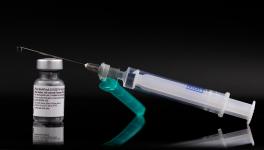Body Donation Movement Continues Despite Setbacks Due to Pandemic

Representational Image. Image Courtesy: The Indian Express
Kolkata: Sipra Mukherjee, a former telephone exchange employee, passed away in Kolkata due to non-COVID-19 related ailments. She was 76 years old. Even though she had pledged to donate her body for scientific use, doctors and hospitals refused to take her body in citing the current COVID-19 situation. The body was later cremated.
Body donation after death for scientific use by doctors is facing a serious hurdle amid the ongoing pandemic. The situation has deteriorated to the extent that when the pioneer of the body donation movement in India, Brojo Roy died of COVID-19 related issues, the organisation he founded, Gonodorpon, was forced to run from pillar to post in search of a hospital to accept his body for donation.
According to Sudipto Saharoy, general secretary of Gonodorpon, Brojo Roy’s body was finally used for the purpose of the first COVID-19 related autopsy in the country.
Later, trade union leader Jyotsna Basu, who passed away due to COVID-19 related ailments, became the first woman in the country whose body was used for COVID-19 autopsy by the doctors of RG Kar Medical College, a government-run hospital. In both the cases, pathological autopsy of the body was done that will contribute to the finding better treatment for the disease caused by SARS-CoV-2, said Saharoy.
Brojo Roy became a member of the undivided Communist Party in 1957, at the age of 21. He later joined the armed struggle and spent seven years in jail from 1970-77. After his release from jail, Roy formed Gonodorpon as a cultural organisation. Eventually, the organisation metamorphosed into the largest body donation facilitator in the entire country, with over 13 lakh donation pledges and over 3,000 donations in West Bengal.
Notably, veteran communist leader Jyoti Basu, too, had pledged his body for donation for scientific purpose through Gonodorpon. Roy and his partner Tripti Choudhury were also the first couple in Kolkata who chose to live together without marriage, challenging the accepted norms at the time.
Following the footsteps of scientist JBS Haldane, the first person in the country to donate his body for scientific use in 1964, 34 people pledged their body for donation in West Bengal on November 6, 1986, initiating the movement for Gonodorpon.
For them, this movement was a protest against religious identity and private capital. The movement faced hindrances in the 1980s in the absence of a legislation for body donation. Later, a draft law drawn by Gonodorpon was handed over to the central government which became an Act (Anatomy Act) in 1990. The Transplantation of Human Organs and Tissues Act, enacted in 1994, was also based on the draft legislation prepared by Gonodorpon.
Get the latest reports & analysis with people's perspective on Protests, movements & deep analytical videos, discussions of the current affairs in your Telegram app. Subscribe to NewsClick's Telegram channel & get Real-Time updates on stories, as they get published on our website.
























